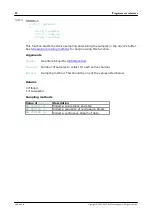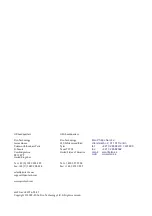
41
Glossary
LSB.
Least significant bit. In a binary word, the least significant bit has the value 1.
MSB.
Most significant bit. In an
n
-bit binary word, the most significant bit has the
value 2^(
n
-1).
Noise-free resolution.
Any measurement is subject to noise. In a digital measuring
instrument, a result with a resolution of
n
bits may include
m
bits of noise. The noise
free resolution is then
n-m
bits.
Noise rejection.
The ability of the data logger to attenuate noise in a given frequency
range. The ADC-20/ADC-24 can be programmed to reject noise at either 50 hertz or
60 hertz. The noise rejection ratio is defined as:
NRR(dB) = 20 log10 (Vin/Vmeas)
where NRR(dB) is the noise rejection ratio in decibels, Vin is the noise voltage at the
input, and Vmeas is the noise voltage that appears in the measurement.
Overvoltage protection.
Overvoltage protection is characterized by the maximum
voltage that can be applied across the inputs of the data logger without causing
damage to it. The ADC-20 and ADC-24 are protected to
±
30 V.
Resolution.
A value, in bits, indicating the number of unique digital values that the
converter can produce. If the resolution is n bits, then the number of unique values is
2 to the power n.
RH.
Relative Humidity. RH is the amount of water vapor present in the air, expressed
as a percentage of the amount needed for saturation at the same temperature.
USB.
Universal Serial Bus. This is a standard port that enables you to connect external
devices to PCs. A full-speed USB 2.0 port operates at up to 480 megabits per second.
The PicoLog 1000 Series is also compatible with any USB port from USB 1.1 upwards.
adc20.en r6
Copyright © 2005–2016 Pico Technology Ltd. All rights reserved.




















